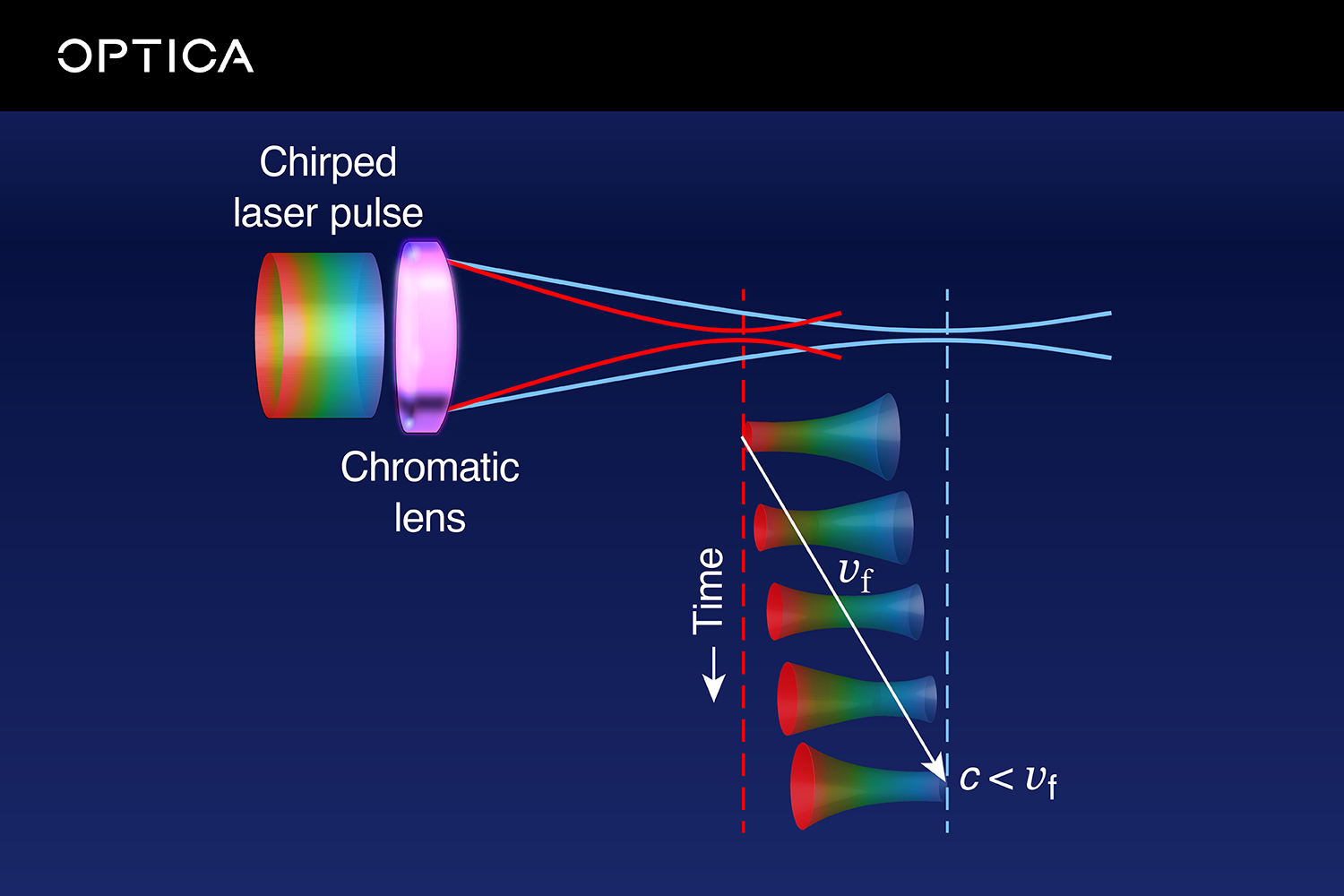We love seeing our scientists’ research out in the wild, and today we are pleased to feature the work of LLE scientists Dustin Froula and John Palastro, co-authors of a review article that has just been published by Optica. The article, “Trends in relativistic laser–matter interaction: the promises of structured light,” explains the concepts of structured light, their applications to experiments at relativistic intensities, practical considerations, and scientific perspectives.
You might be wondering: what even is structured light? As you may know, light can be reflected and absorbed, but through its amplitude, phase, and polarization, it can also be shaped like a sculpture from clay. The ability to control the structure of light presents exciting opportunities for research—particularly in advanced studies of laser–matter interactions—and lies at the core of the pioneering work LLE is conducting today. LLE has invented the flying focus—a form of structured light where the peak amplitude of a laser pulse can travel long distances at any velocity, including those faster than the speed of light. The flying focus offers a new approach to optimizing laser–plasma applications that require synchronizing the amplitude of a laser pulse with a physical process like accelerating electrons in a plasma over long distances, which could enable the next generation of electron colliders and radiation sources.

